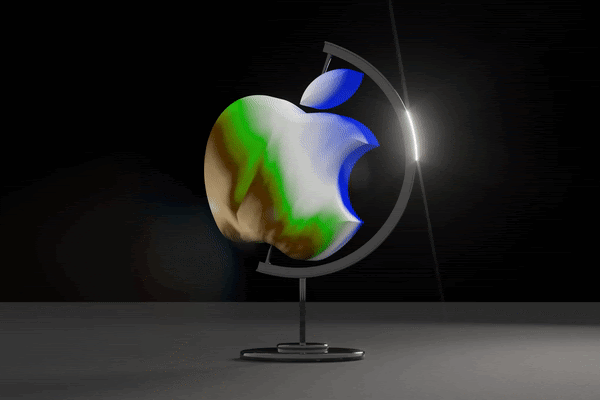[ DRAFT: WORK-IN-PROGRESS ]
America’s peculiar relationship with its mobile technology mirrors its peculiar relationship with its economic institutions.

30 June 2021 – More than a century ago, Thorstein Veblen – American economist, sociologist and social critic – warned that the United States had developed a bizarre and debilitating network of social habits and economic institutions. Ascendant financial practices benefited a limited group at the expense of the greater society; yet paradoxically Americans deemed these practices necessary, even commendable. Far from lambasting the financiers plundering the nation’s resources, we lauded them as the finest members of society. Their instincts, wisdom and savoir faire were idealized, their avarice and chicanery promoted under the banners of patriotism and virtue.
Veblen, an inveterate reader of ethnographies, noticed a historical pattern that could illuminate America’s peculiar relationship with its economic institutions, and would repeat 100 years later with technology. The purpose of this post is not to dwell too much on Veblen’s work but to show some parallels in today’s world.

But his scathing “The Theory of the Leisure Class” could have been written today, a landmark study of affluent American society that exposes, with brilliant ruthlessness, the habits of production and waste that link invidious business tactics and barbaric social behavior – an analysis of the evolutionary process that sees greed as the overriding motive in the modern economy at great human cost paid when social institutions are exploited by the consumption of unessential goods for the sake of personal profit. Sound familiar? The targets of Veblen’s coruscating satire are as evident today as they were a century ago.
According to Veblen, societies everywhere fall between two extremes. First, there are societies in which every person works, and no one is demeaned by his or her toil. In these societies, individuals pride themselves on their workmanship, and they exhibit a natural concern for the welfare of their entire community. As examples of such “productive” societies, Veblen mentions Native Americans, the Ainus of Japan, the Todas of the Nilgiri hills and the bushmen of Australia. Second, there are “barbarian” societies, in which a single dominant class (usually of warriors) seizes the wealth and produce of others through force or fraud—think ancient Vikings, Japanese shoguns and Polynesian tribesmen. Farmers labor for their livelihood and warriors expropriate the fruits of that labor. Exploitative elites take no part in the actual production of wealth; they live off the toil of others. Yet far from being judged criminal or indolent, they are revered by the rest of the community. In barbarian societies, nothing is as manly, as venerated, as envied, as the lives of warriors. Their every trait – their predatory practices, their dress, their sport, their gait, their speech – is held in high esteem by all.
Our world falls into the latter form. There remains a class that pillages, seizes and exploits in broad daylight – and with our envious approval. Who were the barbarian warriors then, and even today? According to Veblen, the modern barbarians live on Wall Street. They are the financiers summarily praised for their versatility, intelligence and courage in the face of an increasingly mysterious economy. Today a growing number of Americans feel at risk of economic despair; in a world of unsatisfying professional options and constant financial insecurity, the image of Wall Street life offers a sort of relief. It symbolizes the success possible in the modern world.
And the sector lives off a myth which goes something like this: only men and women equipped with the highest intelligence, the will to work death-defying hours and the most advanced technology can be entrusted with the sacred and mysterious task of ensuring the growth of the economy. Using complicated financial instruments, these elites (a) spread the risks involved in different ventures and (b) discipline firms to minimize costs—thus guaranteeing the best investments are extended sufficient credit. According to this myth, Wall Street is the economy’s private nutritionist, advising and assisting only the most motivated firms—and these fitter firms will provide jobs and pave the path to national prosperity.
It took Nobel Laureate James Tobin to demonstrate that a very limited percent of the capital flow originating on Wall Street goes toward financing “real investments” – that is, investments in improving a firm’s production process. If the rest of us do not understand exactly why trading credit derivatives and commodity futures would achieve all this, this is because we are not as smart as the people working on Wall Street. Even Wall Street elites are happy to admit that they do not really know how the system works; such admissions only testify to the immensity of their noble task.
It was Tobin who first explained that early on, capitalism encouraged entrepreneurs to invest in new technology, thus unleashing incredible productive potential. But as the hunger for profits outpaced technological innovation, the modern barbarian developed new instruments for increasing the value of his assets – without having to produce anything new. Rather than focus his energies on developing more productive ventures, he started to sell the promise of increased future revenue – which he called an “immaterial asset.” The first immaterial assets were patents and trademarks; what were formerly strategies for being more productive, the barbarian now learned to package and sell by themselves. The next step was to sell claims to these immaterial assets in the form of yet another immaterial asset: capital stock. This stock represented a promise of revenue based on other promises of revenue.
Over time, more and more immaterial assets were created and sold, then listed on balance sheets as corporate bonds, credit derivatives and hybrid securities. Eventually, a corporation started to look less like a producing firm and more like a bunch of immaterial assets and liabilities. Today a corporation’s success often depends on how much credit it can raise – that is, on how successfully it can sell the promise of future success.
Salesmanship and future earnings projections replaced productivity and innovation as the engines of our economy. The barbarian’s pursuit of financial profit determines how a corporation employs its labor and technology – that is, whether it is valuable to be productive. As Tobin explained, capitalism, once propelled by technological investment (classical capital), would be driven by immaterial technology that increases the value of immaterial assets (financial instruments moving modern capital). Today Goldman Sachs and JP Morgan don’t invest in the promise of producing things of use or real value. They invest in the promise of rising asset prices (or in the case of shorting stocks, the promise of falling asset prices). In their world, value is defined by gain. It used to be the other way around.
And so the “new business cycle” has been determined by financial innovation, not national productivity and consumer demand. Booms are born when a new financial instrument is dreamed up, and busts occur when the conjurer’s secret is uncovered and collapses. Aided and abetted by venture capital, private equity and whoever/whatever is the flavor-of-the-month machination.
In today’s world, for mobile technology, there are some very interesting parallels to all of this.

Many have been surprised this year that Apple hasn’t really budged as regulators and some app companies complain loudly about the downsides of the app system that Apple created more than a decade ago. The gripe essentially is that Apple abuses its control over iPhone apps to impose unfair fees and complexities on app developers. That’s the claim in a lawsuit that Epic Games, the maker of the Fortnite video game, has pending against Apple.
Apple says that it is right to exercise control over apps and collect commissions for some things that we do on our phones. But there’s also something else at work: fear. Connecting the dots between Apple’s business predicaments and its choices helps us understand why the company does what it does – and by extension how those actions affect everyone, whether we own an Apple device or not. Apple’s strategy bends the world.
Why should Apple be worried? It is wildly successful and has so much cash that … well, corporate employees sit in desk chairs that might cost more than your sofa. Or your car.
But the reality is that sales of smartphones will probably never again have a growth spurt like the one in the 2010s that made Apple a superstar. Smartphones have become a necessity of modern life in many countries, like refrigerators, but there are fewer potential first-time smartphone buyers every year, and people are waiting longer to replace phones they already own.
Ok, a caveat. I’ll acknowledge that Apple has sold a bunch more iPhones and other devices recently. Last month Apple said its profits more than doubled to $23.6 billion in the most recent quarter as people embraced its latest iPhones and bought more of its other products, striking results for what is already the world’s most valuable company. Apple said its revenues soared by 54 percent to $89.6 billion, a record for the March quarter that meant Apple sold more than $1 billion on average each day. The rapid growth is partly explained by slower sales in the same three-month period last year as the pandemic first took hold, but the quarter was still strong on its own merits and far surpassed analysts’ expectations. Apple’s sales increased sharply in each of its product categories and in each of its regions around the world. As usual, the main driver of Apple’s success was the iPhone. We’ll see if that’s lasting, or a pandemic-related blip.
Apple and lots of people who keep tabs on the company don’t think it’s a problem if Apple has a harder time selling more iPhones each year. Instead, the company has shifted its strategy to make more money from the gadgets that we have in our homes and pockets — in the form of app downloads, subscriptions like Apple Music, AirPods headphones and other Apple products or services connected to company devices. Services, services, services. It’s a smart strategy that’s working very well, but also one born of necessity now that the peak smartphone era seems to be over. Like the banks and Wall Street as I outlined above, a form of “financial innovation” was required.
This illustrates how App Stores have effectively converted platform dynamics into aggregation opportunities, which makes for a truly impenetrable business model: unlike the online aggregators, which sit on the open web, there is no alternative way for suppliers to reach end users, because one of the hallmarks of platforms is that they make the suppliers’ business possible in the first place.
And it also goes to something I have addressed in previous posts which is something technology regulators do not understand about the business and structure of Big Tech. It has two philosophies:
1. Facebook and Google (aggregators) want to do things for you
2. Microsoft and Apple (platforms) are about helping you do things better.
This is ultimately the most important distinction between platforms and aggregators: platforms are powerful because they facilitate a relationship between 3rd-party suppliers and end users; aggregators, on the other hand, intermediate and control it. It follows, then, that debates around companies like Google that use the word “platform” and, unsurprisingly, draw comparisons to Microsoft twenty years ago, misunderstand what is happening and, inevitably, result in prescriptions that would exacerbate problems that exist instead of solving them.
There is, though, another reason to understand the difference between platforms and aggregators: platforms are aggregators’ most effective competition. There has been no attempt by regulators to understand all the moving parts. The proposed regulations will create massive new problems, have significant unintended consequences, and worst of all, not even address the issues concerned about. Worse, it would do so by running roughshod over the idea of judicial independence, invite endless lawsuits and bureaucratic meddling around subjective definitions, and effectively punish consumers for choosing the best option for them. This is something I covered in much more detail over the weekend in this post.
And hence the need to understand the business models which leverage the best parts of modularity – diversity and competition at different parts of the value chain – and aligns the incentives of all of them. Every referral partner, developer, theme designer, and now 3PL provider is simultaneously incentivized to compete with each other narrowly because that means the pie is bigger for everyone.
It also explains Walmart’s failure to compete with Amazon head-on; after years of trying to leverage its stores in e-commerce, Walmart realized that Amazon was winning because e-commerce required a fundamentally different value chain, a different business model than retail stores. The point is Walmart (and others) recognise you cannot try to imitate Amazon, but rather must to focus on the areas where the stores actually were an advantage, like groceries, but it’s worth understanding exactly why attacking Amazon head-on was a losing proposition. This is the only way to take on an integrated aggregator like Amazon. Trying to replicate what Amazon has built up over decades, as Walmart had attempted, is madness. Amazon has the advantage in every part of the stack, from more customers to more suppliers to lower fulfillment costs to faster delivery.
No, we are not completely at the whims of big companies’ tactics to make money. But I find it useful to examine the ways that our technology choices are not accidents, nor are they purely driven by what we want.